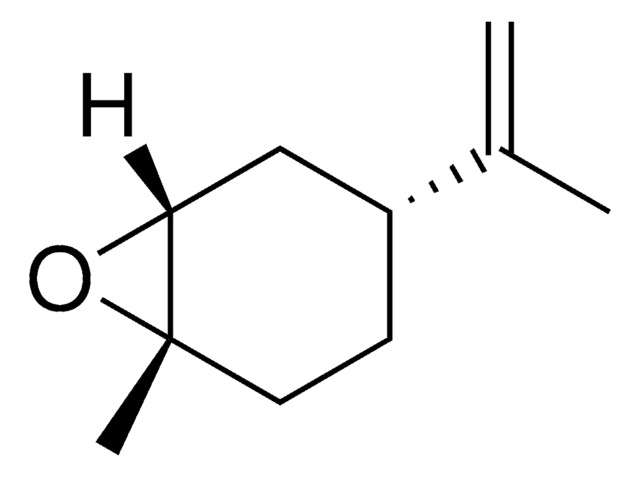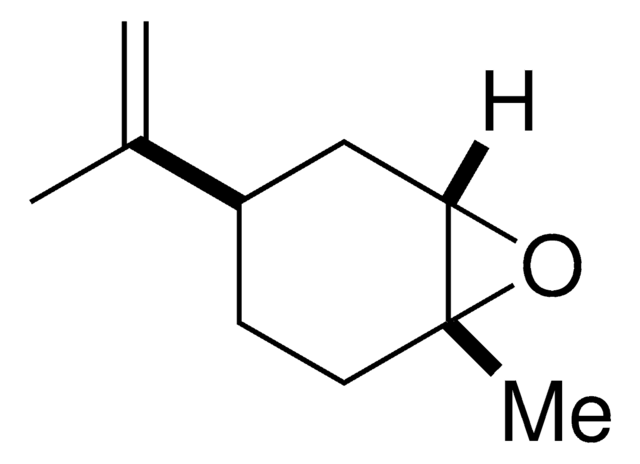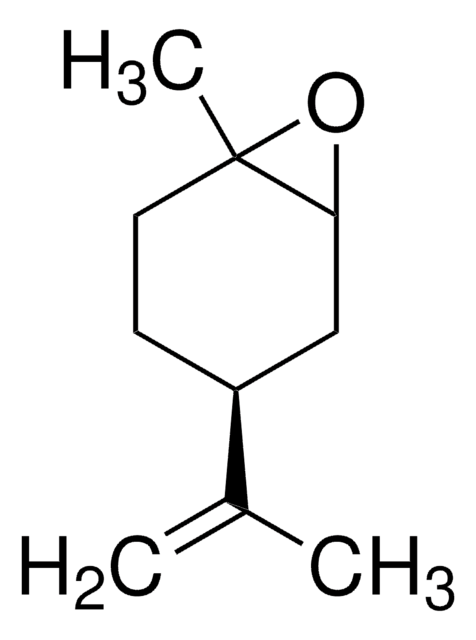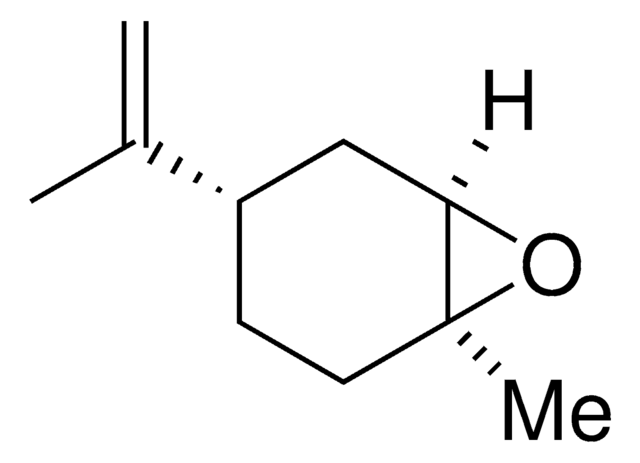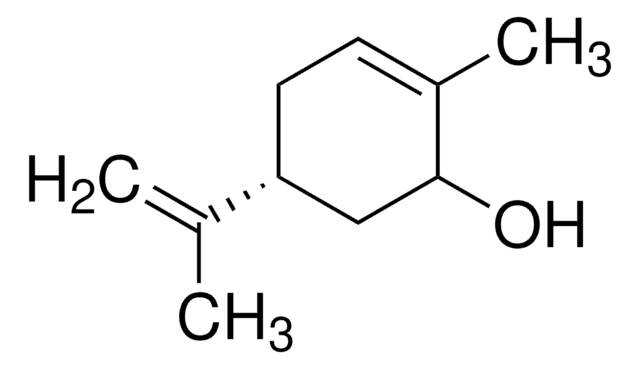923206
trans-(-)-limonene oxide
≥95%
Synonym(e):
(1R,4S,6S)-4-isopropenyl-1-methyl-7-oxabicyclo[4.1.0]heptane
About This Item
Empfohlene Produkte
Qualitätsniveau
Assay
≥95%
Form
liquid
Brechungsindex
n/D 1.467
Dichte
0.920 g/mL
InChI
1S/C10H16O/c1-7(2)8-4-5-10(3)9(6-8)11-10/h8-9H,1,4-6H2,2-3H3/t8-,9-,10+/m0/s1
InChIKey
CCEFMUBVSUDRLG-LPEHRKFASA-N
Anwendung
Ähnliches Produkt
Lagerklassenschlüssel
10 - Combustible liquids
WGK
WGK 3
Flammpunkt (°F)
Not applicable
Flammpunkt (°C)
Not applicable
Analysenzertifikate (COA)
Suchen Sie nach Analysenzertifikate (COA), indem Sie die Lot-/Chargennummer des Produkts eingeben. Lot- und Chargennummern sind auf dem Produktetikett hinter den Wörtern ‘Lot’ oder ‘Batch’ (Lot oder Charge) zu finden.
Besitzen Sie dieses Produkt bereits?
In der Dokumentenbibliothek finden Sie die Dokumentation zu den Produkten, die Sie kürzlich erworben haben.
Unser Team von Wissenschaftlern verfügt über Erfahrung in allen Forschungsbereichen einschließlich Life Science, Materialwissenschaften, chemischer Synthese, Chromatographie, Analytik und vielen mehr..
Setzen Sie sich mit dem technischen Dienst in Verbindung.